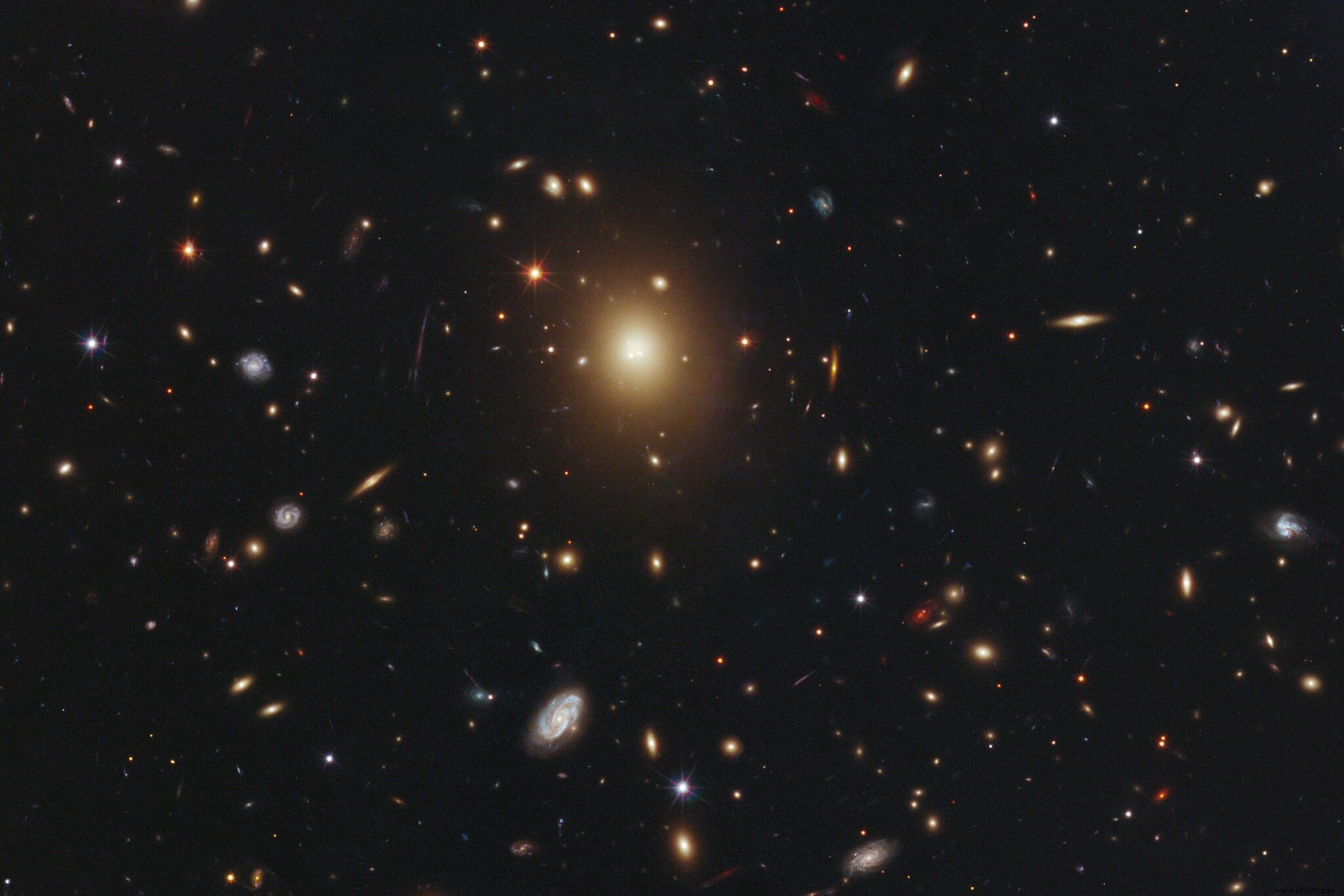At the center of the Abell 2261 galaxy must be a black hole as massive as several billion suns. However, the researchers do not detect any sign of the presence of such an object. Is it just inactive? Has it been screened elsewhere? The investigation is ongoing.
We have known for several years that at the center of all large galaxies normally hides a supermassive black hole. Some of these cosmic ogres can be millions or even billions of times heavier than the Sun. Overall, the larger a galaxy, the more massive its central black hole.
This explains the surprise of a team of astronomers who, in 2012, detected no sign of a black hole in the center of the giant galaxy Abell 2261 with Hubble. You will find it about 2.7 billion light-years away from Earth in the constellation of Hercules, not far from the star Vega.
Yet, if calculations are to be believed, such a galaxy should harbor a monster of at least ten billion solar masses . For comparison, the black hole at the center of the Milky Way is only about four million solar masses.
In the years that followed, Marc Postman of the Space Telescope Science Institute and Tod Lauer of the National Optical-Infrared Astronomical Research Laboratory in Tucson, Arizona, at the origin of this astonishing observation, continued to scrutinize the center of this galaxy in search of X-rays or radio waves likely to betray the presence of the missing black hole. These works have so far produced nothing.
So where did this black hole go? "It's an intriguing mystery, but we're on the case “, assures Dr. Postman.
Black holes are invisible by definition, but the ruckus (X-rays and radio waves) caused by matter wrapping around these objects can be seen across the universe.
In 1980, Mitchell Begelman, Martin Rees and Roger Blandford, three astronomers, wrote about how these black holes could alter the evolution of the galaxies they inhabit.
When two galaxies collide and merge, their central black holes meet and form a binary system . These researchers then argued that these two massive black holes could interact with the sea of stars in which they are immersed. Every once in a while, one of these stars gets a little too close and gets ejected.
Over time, more and more stars find themselves driven out, and little by little, the light from these once concentrated objects spreads out into a larger, diffused core. What remains is a small "fold" of light in the center of the galaxy where the pair of black holes normally resides. This process is called "scrubbing".
A "scoured core" was the kind of situation Dr. Lauer and Dr. Postman thought they encountered with Abell 2261. However, instead of a "spike" found in the center from the core, there was a hollow. As if the supermassive black hole(s) supposed to be at the center had simply disappeared.

A hypothesis suggests that the supposed cosmic ogre residing in the heart of Abell 2261 has found itself projected outside . The process of merging two black holes would have been accompanied by a cataclysmic burst of gravitational waves. However, we know from modeling that the emission of these waves can be very asymmetrical. It is therefore not impossible that the newly formed black hole will be ejected, propelled by such an emission of gravitational waves.
If this was the case, however, this black hole should be somewhere not far from the galactic center.
Further examination of the galaxy revealed four small "nodes of light" in the diffuse core. Could one of them harbor the black hole(s)?
A team led by Sarah Burke-Spolaor of the University of West Virginia carried out spectroscopic measurements with Hubble in an attempt to measure the speed of stars contained within of these nodes. These data could indeed help to determine the presence or not of a supermassive object accompanying them .
It eventually turned out that two of these nodes were probably just remnants of small galaxies cannibalized by the larger one. Measurements of the third node showed error bars so large that it cannot yet be considered the location of the black hole. Finally, the fourth node, very compact and found near the lower edge of the nucleus, was too weakly luminous, even for Hubble. It therefore also remains a candidate for the black hole hiding place.
Astronomers now eagerly await the launch of the James Webb Telescope, Hubble's long-awaited successor, still slated for the end of October. This observatory will indeed be able to examine these four nodes with greater sensitivity , thus making it possible to determine if one of them is hiding our much sought-after suspect.